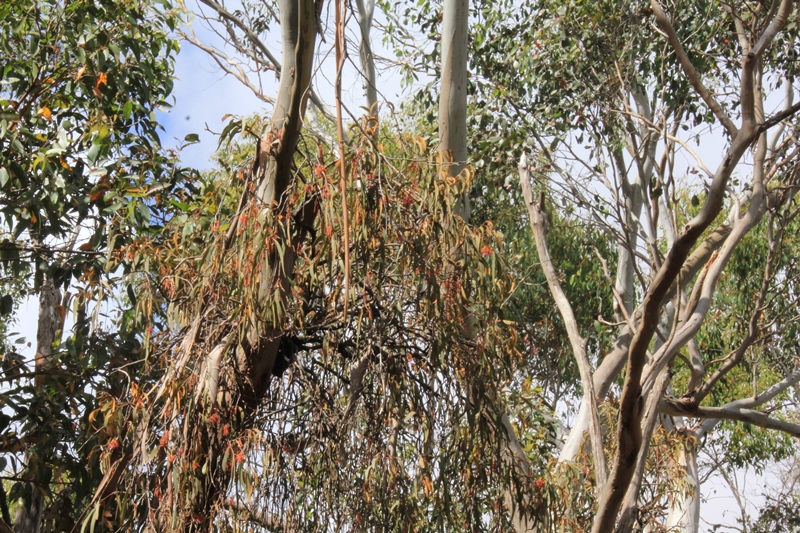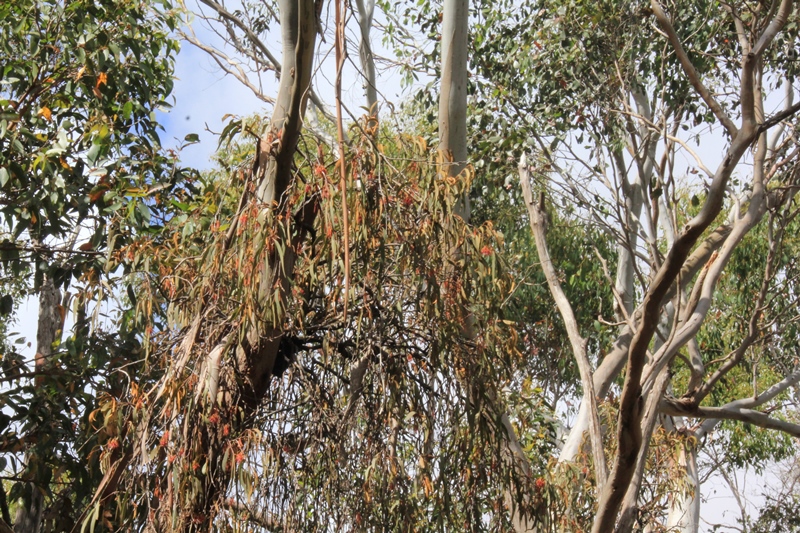
For many years I have wanted to have a red flowering eucalypt, so when I spotted what appeared to be red flowers on the ground, I got excited – only to work out that I have a red flowering Mistletoe. The Mistletoe is a parasitic plant which attaches to eucalypts and sometimes acacia trees. The flowers and fruit attract birds and small, tree-climbing mammals, spreading the Mistletoe to other trees.

According to Enid Mayfield’s Flora of the Otway Plain and Ranges 2, there are 100 species of Mistletoe, with 36 species being found in Australia. Looking at the website VicVeg, there are seven species grown in our area. I’m pretty sure our species is Drooping Mistletoe, but there are two subspecies of this plant and I am not sure which subspecies is growing here. It is a little bit too high to have a close look.
Mistletoe can harm trees, but as this article written by Abbie Thomas through ABC Science points out, in some parts of Australia, the Mistletoe can be one of very few food sources for wildlife in drought conditions. This article also states that there are 1500 species of Mistletoe worldwide with 70 species growing in Australia. I guess there has been a lot of research on it over the last few years.


